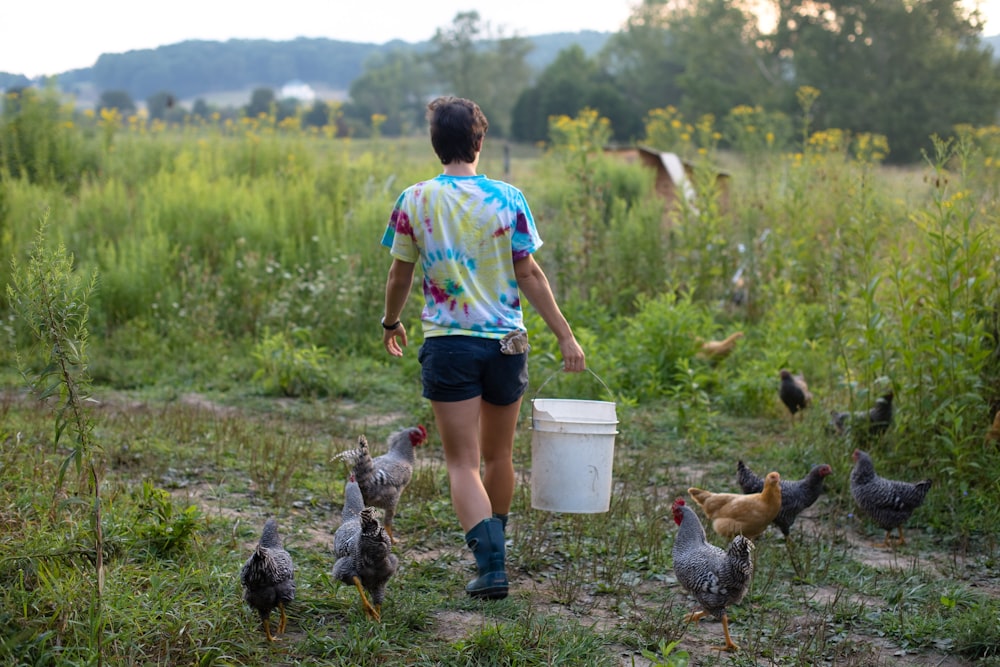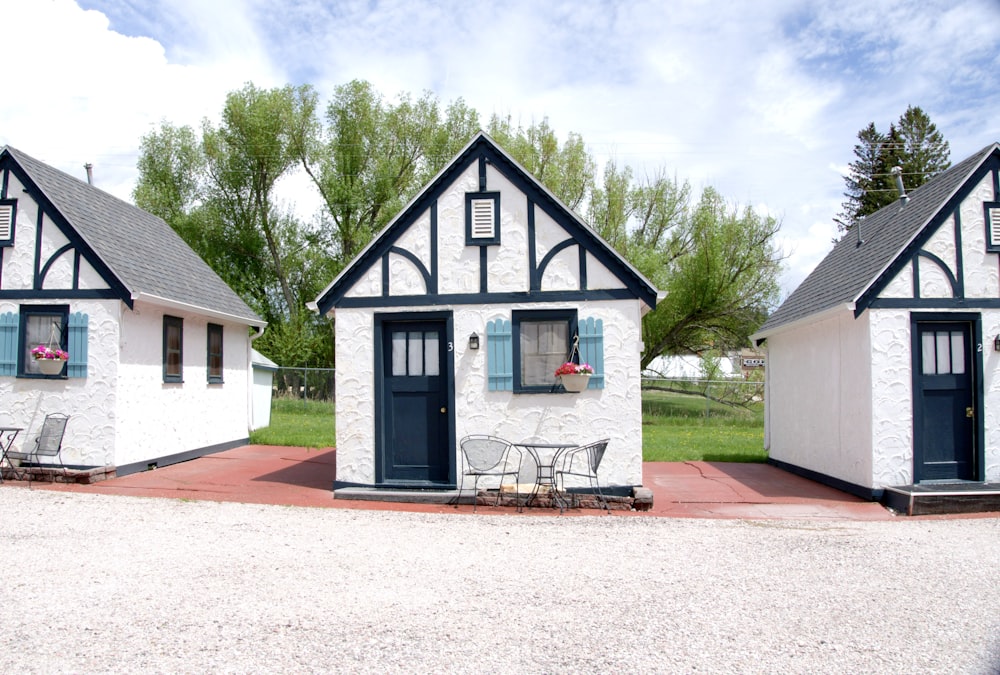Living off the Land: Homesteading in San Diego County
San Diego County, known for its stunning coastal landscapes, diverse ecosystems, and year-round sunshine, may not be the first place that comes to mind when you think of homesteading. However, a growing number of individuals and families are embracing the homesteading lifestyle in this Southern California region. From cultivating small-scale farms to living off-grid in rural areas, homesteaders in San Diego County are redefining what it means to live sustainably in a modern world. Let's explore the unique challenges and rewards of homesteading in this dynamic region. **Embracing Self-Sufficiency** Homesteading is a lifestyle centered around self-sufficiency, sustainability, and a deep connection to the land. In San Diego County, homesteaders are reclaiming forgotten agricultural land, cultivating organic gardens, raising livestock, and harnessing renewable energy sources to reduce their reliance on the conventional food and energy systems. **Challenges of Homesteading in San Diego County** While the idyllic climate of San Diego County offers many advantages for homesteaders, it also presents unique challenges. Limited water resources, high land prices, and strict zoning regulations can make it difficult to establish and maintain a homestead in this region. Additionally, wildfires, droughts, and other environmental factors pose risks to homesteaders' livelihoods and safety. **Adapting to the Climate and Terrain** Homesteaders in San Diego County must adapt their practices to the local climate and terrain. With hot, dry summers and mild winters, water conservation and drought-resistant gardening techniques are essential. Some homesteaders opt for permaculture principles, utilizing native plants and natural landscaping to create resilient, low-maintenance ecosystems. **Community Building and Collaboration** Despite the challenges, the homesteading community in San Diego County is thriving. Homesteaders come together to share knowledge, resources, and support through local meetups, workshops, and online forums. Collaborative projects, such as community gardens and seed swaps, foster a sense of camaraderie and resilience among homesteaders facing common challenges. **Preserving Agricultural Heritage** Homesteading in San Diego County is not just about self-sufficiency; it's also about preserving the region's agricultural heritage. By reviving heirloom varieties, supporting local farmers, and participating in community-supported agriculture (CSA) programs, homesteaders contribute to the preservation of traditional farming practices and biodiversity in the region. **The Rewards of Homesteading** While homesteading in San Diego County requires dedication, hard work, and perseverance, the rewards are plentiful. From fresh, homegrown produce to a deeper connection to the natural world, homesteaders experience a sense of fulfillment and purpose that comes from living in harmony with the land. **Final Thoughts** Homesteading in San Diego County is more than just a lifestyle; it's a way of reconnecting with the land, fostering community resilience, and preserving local agricultural traditions. As more individuals and families seek alternatives to mainstream consumerism and urban living, the homesteading movement in San Diego County continues to grow and thrive. Whether you're dreaming of cultivating a small garden or embarking on a self-sufficient off-grid adventure, there's a place for you in the vibrant homesteading community of San Diego County.
Tiny Homes, Big Dreams: Navigating the Challenges of Building Tiny in San Diego
San Diego, with its stunning beaches, vibrant culture, and year-round sunshine, is a city that attracts people from all walks of life. However, like many metropolitan areas, it faces challenges related to housing affordability and availability. In recent years, the concept of tiny homes has emerged as a potential solution to these issues. Yet, navigating the process of building tiny homes in San Diego comes with its own unique set of challenges. Let's explore the journey of those who dare to build tiny in this vibrant city. **The Appeal of Tiny Homes** Tiny homes offer a simpler, more sustainable way of living that resonates with many individuals seeking financial freedom, minimalism, and environmental consciousness. In a city like San Diego, where housing costs continue to rise, tiny homes present an attractive alternative for those looking to downsize without compromising on quality of life. **Zoning and Regulatory Hurdles** One of the biggest obstacles to building tiny homes in San Diego is navigating zoning and regulatory requirements. The city's zoning laws often dictate minimum square footage requirements for dwellings, making it challenging to obtain permits for tiny home construction. Additionally, restrictions on accessory dwelling units (ADUs) can further complicate the process. **Land Availability and Cost** Finding suitable land for tiny home construction in San Diego can be another significant challenge. Land prices are notoriously high, and available parcels suitable for tiny homes may be scarce. Competing with larger developers and investors for land can drive up costs and limit options for aspiring tiny homeowners. **Community Opposition** Despite the growing popularity of tiny homes as a solution to housing affordability, some communities in San Diego may resist the idea of incorporating tiny homes into their neighborhoods. Concerns about property values, aesthetics, and perceived impacts on the community's character can lead to opposition to tiny home developments. **Navigating the Permitting Process** Securing permits for tiny home construction in San Diego can be a complex and time-consuming process. From obtaining zoning variances to complying with building codes and regulations, navigating the permitting process requires patience, persistence, and often professional assistance. **Finding Creative Solutions** Despite these challenges, many individuals and organizations in San Diego are committed to making tiny home living a reality. From advocacy groups pushing for changes to zoning laws to innovative developers finding creative ways to overcome regulatory hurdles, there is a growing movement to support tiny home initiatives in the city. **The Future of Tiny Homes in San Diego** While building tiny homes in San Diego may present challenges, the potential benefits—affordability, sustainability, and community—are too significant to ignore. As the demand for alternative housing options continues to grow, it's likely that we'll see more efforts to overcome regulatory barriers and make tiny home living a viable option for residents of America's Finest City. **Final Thoughts** Building tiny homes in San Diego is not for the faint of heart. It requires perseverance, creativity, and a willingness to navigate through regulatory and logistical challenges. However, for those who are passionate about embracing a simpler, more sustainable way of living, the rewards of tiny home ownership in this beautiful city can be immeasurable. As the tiny home movement continues to gain momentum, it's an exciting time to be part of the conversation about the future of housing in San Diego.
Navigating the Journey Together: Buying a Home with Other People
Owning a home is a milestone that many aspire to achieve. It's a symbol of stability, security, and a place to call your own. However, in today's world where the cost of living continues to rise, purchasing a home solo might not be feasible for everyone. This is where the concept of buying a home with other people comes into play. Pooling resources and purchasing a home with friends, family, or even acquaintances is becoming increasingly common. While it can offer financial benefits and shared responsibilities, it also comes with its own set of considerations and challenges. Let's delve into what you need to know before embarking on this shared homeownership journey. Communication is Key Before diving into the financial aspects, it's crucial to establish clear communication with your prospective co-buyers. Discuss expectations, long-term goals, and individual financial situations openly and honestly. Addressing concerns and potential conflicts early on can help prevent misunderstandings down the road. Choosing the Right Co-Buyers Selecting the right people to buy a home with is paramount. While it may be tempting to involve close friends or family members, consider factors beyond personal relationships. Look for individuals who share similar values, financial habits, and homeownership goals. It's also essential to have a legal agreement in place outlining each party's rights, responsibilities, and exit strategies. Financial Planning When buying a home with others, financial planning becomes more complex. Determine how you'll split the down payment, mortgage payments, property taxes, maintenance costs, and other expenses. It's advisable to consult with a financial advisor or real estate attorney to ensure all parties are clear on their financial obligations and rights. Ownership Structure There are different ownership structures to consider when buying a home with others, such as joint tenancy, tenancy in common, or forming an LLC. Each structure has its implications regarding ownership rights, decision-making processes, and liability. Research each option thoroughly and choose the one that aligns best with your group's needs and preferences. Exit Strategy Life is unpredictable, and circumstances can change. Establishing a clear exit strategy is essential to mitigate potential conflicts or financial risks in the future. Determine under what circumstances a co-buyer can sell their share of the property, how the property will be valued, and how proceeds will be distributed. Having these provisions in place can provide peace of mind for all parties involved. The Emotional Aspect Buying a home is not just a financial transaction; it's an emotional investment as well. Be prepared for the dynamics of your relationship with your co-buyers to evolve over time. Open communication, mutual respect, and flexibility are key to navigating any challenges that may arise. Final Thoughts Buying a home with other people can be a rewarding experience that enables individuals to achieve homeownership while sharing both the financial burden and the joys of homeownership. However, it requires careful planning, clear communication, and a solid legal framework to ensure a successful partnership. By addressing potential challenges upfront and working together as a team, co-buyers can turn their shared homeownership dreams into a reality.
Categories
Recent Posts










GET MORE INFORMATION

Real Estate Broker | License ID: DRE 01700986
